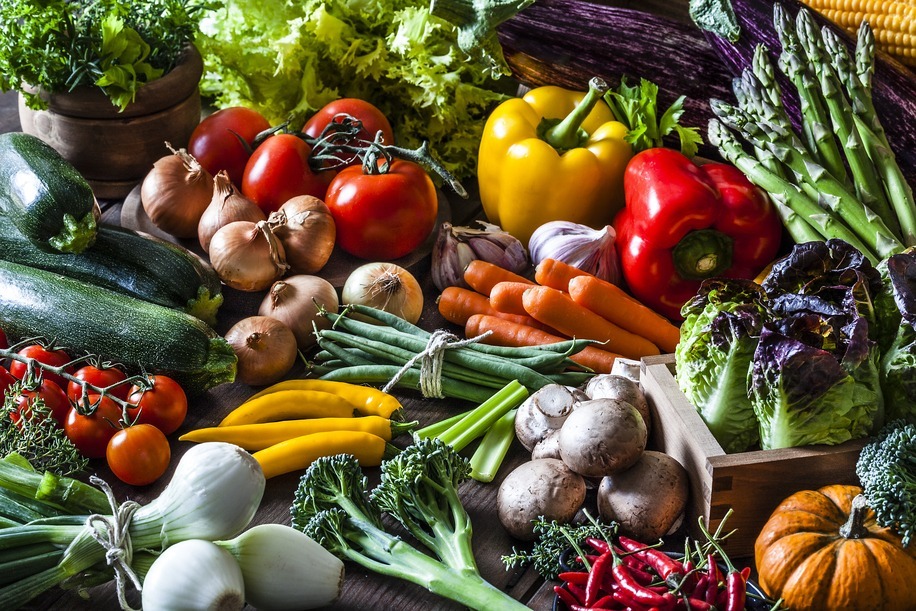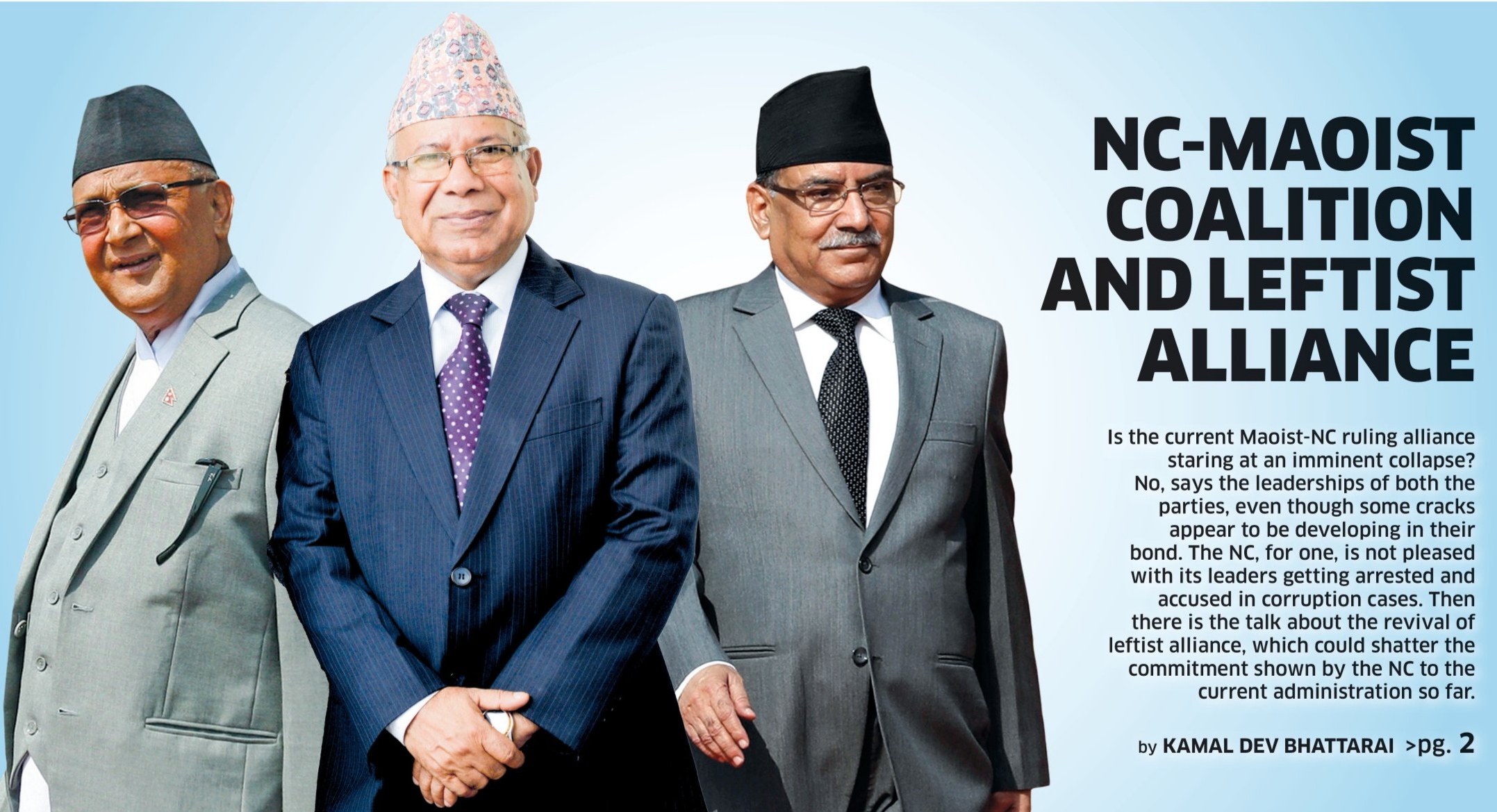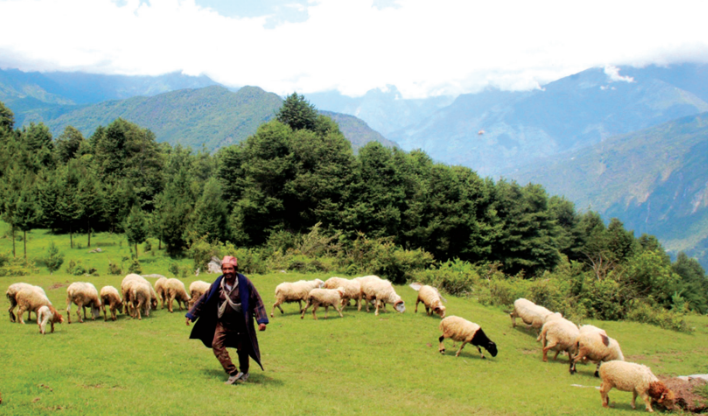Government has hamstrung CIAA to promote corruption
The government has itself hamstrung the power of the Commission for the Investigation of Abuse of Authority (CIAA). The anti-graft body has faced impediments when it comes to the investigation of corruption scandals involving powerful people. Transparency International’s (TI) 2022 report shows that Nepal stands at 110 out of 180, scoring only 34 out of 100 in the Corruption Perceptions Index. Somalia is the most corrupt country with lowest score of 12 while Denmark is the least corrupt with the highest score of 90. The Global Corruption Barometer of the TI in 2022 also mentions that 84 percent of Nepali people think that government corruption is a big problem in the country. It also states that 12 percent of public service users paid a bribe in the year of 2022. “It means Nepal is in a still worse condition in terms of corruption, failing to ensure good governance,” say governance experts. In its latest 2023 report, the Office of Auditor General (OAG) revealed that the government has an unaudited budget of Rs 587.33bn. The country had a total amount of Rs 483.59bn unaudited till the last year and Rs 119.77bn arrears was added this year alone. The OAG report clearly indicates rampant misuse of public funds in government bodies. Observers say instances of corruption and power abuse naturally thrive when the CIAA, the constitutional anti-graft body, fails to do its job. The commission’s lack of interest to look into the fake Bhutanese refugee scandal involving top politicians, their close aides and family members is a case in point. “We are not probing into the case in full scale,” admints one CIAA official. “We are investigating the concerns of only government officials involved in the scandal.” The CIAA has also not taken any initiative to look into the cases forwarded by the Public Accounts Committee of Parliament. Some of the prominent cases include irregularities concerning widebody plane purchase, security printing press procurement, Omni Group scandal involving purchase of medical equipment during the Covid pandemic, Baluwatar land grab case, and Ncell tax. While independent media and organizations like Transparency International call out the incompetence of Nepal’s anti-graft agency, the CIAA officials claim that they have been doing a stellar job. “We have adequately probed into the cases registered with us and taken appropriate action against those found guilty,” says Bhola Dahal, spokesperson for the CIAA. But despite Dahal’s tall claim, it is an open secret that the commission does not launch any probe into cases involving top politicians and bureaucrats. Dr Dipesh Ghimire, assistant professor at Tribhuvan University, says the CIAA should not hesitate to do its job even if it is the prime minister who stands accused of wrongdoing. “If corrupt ministers or officials are not punished, then the CIAA is not doing its job,” he adds. “It is usually the junior level officials who are often grilled on corruption cases.” The CIAA received 24,331 complaints of corruption in the fiscal year 2021/22. However, it only filed 131 corruption cases in the Special Court. The commission rarely takes action in cases involving high profile people. Such complaints are either put on hold or shelved altogether. As per the 2021 records of the CIAA, it shelved 42 files concerning illegal and unrecognized earnings belonging to high-ranking government officials, claiming that the probe ended without sufficient evidence. Observers say those in power, including politicians, lawmakers and ministers, have designed the anti-corruption law in a way that their misdeeds cannot be prosecuted. The 2015 constitution has removed the power of the CIAA to probe into unethical activities including Cabinet decisions and policies. The commission is also ineligible to probe into corruption cases involving the judiciary, the Nepal Army and the private sector. The lawmakers who drafted the constitution did so despite knowing that policy-level corruption is far more detrimental and has overreaching effects. “The prime minister and Parliament are the most responsible authorities to eradicate corruption in the country. But they are reluctant to do so,” says Dr Ghimire. Thakur Gaire, lawmaker from the CPN-UML, admits that the government itself is promoting corruption in the country. He says it has gone so far as to meddle in the affairs of the judiciary and the legislature “The Cabinet of Nepal openly intervenes with the affairs of other government arms to fulfil the vested interests of some ministers,” says Gaire. “It doesn’t allow the CIAA, the National Human Rights Commission, and courts to run independently.” Corruption in Nepal is organized under political protection, as the top appointments in the CIAA are handpicked by political parties under shared quotas. “Such activities promote partisan interests to attack other parties and protect their own leaders and cadres even when they are accused of serious crimes,” adds the UML lawmaker. Politically appointed anti-graft body’s leadership mostly works for the interests of those parties that appointed them, instead of performing their duty as per the spirit and mandate of the constitution. It is no wonder, even some former CIAA commissioners like Deep Basnyat and Raj Narayan Pathak have been accused of corruption. “The appointments in the CIAA should be transparent, independent and unbiased,” says Purna Chandra Bhattarai, former government secretary. “Under the present situation, good governance is a far cry.” Infographics CIAA issues-based data of cases filed at the Special Court
| FY | Total cases |
| 2013/14 | 168 |
| 2014/15 | 303 |
| 2015/16 | 144 |
| 2016/17 | 154 |
| 2017/18 | 194 |
| 2018/19 | 351 |
| 2019/20 | 441 |
| 2020/21 | 113 |
| 2021/22 | 131 |
Turbulence in the ruling coalition
Earlier this Monday, some fringe communist parties announced the formation of Socialist Front Nepal, a loose network of “like-minded” political forces. It comprises the CPN (Maoist Center), the Upendra Yadav-led Janata Samajbadi Party, CPN (Unified Socialist) and the Netra Bikram Chand-led CPN Maoist. Together they announced plans to form and expand the front at the provincial and local levels as well. Political observers see the latest communist front as a tactic to boost the number of votes in the next election, as their individual presence across the country and their organizational strength are in tatters. Leading the front is the Maoist Center of Prime Minister Pushpa Kamal Dahal, which won just 32 seats in the federal parliament in the 2022 general elections. Next up are the Madhav Kumar Nepal-led Unified Socialist, which failed to even secure a national party status winning only 10 seats under first-past-the-post voting category and zero under the proportional representation system; Yadav’s JSP, which has 12 seats in the federal parliament; and Chand’s Maoist party, which did not contest the elections. The key purpose of the front is to make collective bargaining for power with either the Nepali Congress or the CPN-UML, two largest parties in parliament. According to some leaders, the front is even planning to fight the next elections under a common symbol by forging an alliance with the NC or the UML. If the alliance plan did not work, the front is even willing to contest the polls as a single political force. It is also noteworthy that the ‘Socialist Front’ has been announced at a time when mistrust is rising between the ruling Maoist party and its coalition partners, particularly the NC. Ruling party insiders say the announcement of the communist alliance has further fueled the mistrust between the two ruling parties. As Finance Minister Prakash Sharan Mahat of the NC designed this year’s budget largely in his party’s favor, parties including the JSP and Unified Socialist are said to be unhappy. Unified Socialist’s senior leader Nepal has already warned that his party will not help the government endorse the budget if some of his party’s demands are not addressed. JSP’s Yadav too has been talking about amending the budget, saying that there was no serious discussion among the coalition partners regarding the budget. It is not just the Unified Socialist and the JSP that have objected to the budget. The CK Raut-led Janamat Party, which is not part of the ‘Socialist Front’, has also said that if the budget is not amended, the party will withdraw its support to the government. These developments clearly show the growing dissatisfaction inside the ruling coalition. By forming the front of communist parties, Prime Minister Dahal meanwhile is trying to show that he has grown powerful, against the narrative that the current coalition is weak. By leading the front, he wants to show that even with just 32 seats in parliament, he has a strong support of fringe communist parties to go head to head with both the NC and the UML. The NC views the formation of the ‘Socialist Front’ as Dahal’s ploy to put pressure on the party into compromising with a collective of fringe forces displaying a common front. The formation of the front also coincides with the growing communication between the NC and the UML. The second-rung leaders of both parties are exploring ways to work together, including the formation of a new government. However, most NC leaders insist that there is no possibility of the current coalition breaking down. One NC leader told Apex on condition of anonymity that if the current coalition breaks down, the party risks losing power both at the center and provinces, just like it did right after the 2022 general elections when the Maoist Center and the UML decided to form a government. He added that there is a good chemistry between NC President Deuba and Prime Minister Dahal of the Maoist Center, a scenario which he cannot imagine with KP Oli of the UML. But there are also those in the NC who do not rule out the possibility of the NC-UML coalition—that is if it ensures government stability for at least five years. Meanwhile, it is in the paramount interest of the UML to come to power in order to stop its cadres and supporters deserting to other political forces like the Rastriya Swatantra Party and the Rastriya Prajatantra Party. If the UML were to return to power at the center and provinces, leaders say it could re-energize the party organization. There is also a growing dissatisfaction within the NC over the performance of the Maoist-led government. Some Congress leaders are concerned that the party’s image will tarnish if the government fails to deliver. Arrests of senior NC and UML leaders over the fake Bhutanese refugee scam have also helped bring the two parties closer. According to a Congress leader, the party's senior member and former minister, Bal Krishna Khand, would not have been arrested had the home minister been from the NC. There are internal and external reasons that could undermine the current ruling coalition. Observers say the formation of ‘Socialist Front’ has further shaken the structural integrity of the NC-Maoist partnership, while the UML looks on, from the sidelines with bated breath.
Why should we eat seasonal food?
If you’ve ever heard an elderly speak of his heydays, you must have heard him say, “In our youth, diseases and illnesses weren’t so common. We ate what we grew in our farms, and walked and worked day and night. It isn’t like today when all you get is packaged food, and people do not have to move an inch. And you wonder why your generation is so unhealthy!” Well, this begs us to consider the question, why are we thought of as an unhealthy generation? Does that have to do with eating or lack of eating food in season? Eating fruits and vegetables that are in season has several benefits. Some of the main advantages of eating food in season is that seasonal produce is fresher, tastes better, and contains more nutrients. This is because seasonal produce is usually harvested at its peak and doesn’t need to be transported long distances. Long distance transportation can cause food to lose its flavor and nutrients. Seasonal fruits, grains, and vegetables were sole sources of sustenance of our forefathers when transportation was difficult and agriculture wasn’t as advanced as it is today. Today, with globalization, produce can come from far-flung places. Technology has advanced so much that foods are grown in labs, greenhouses and through chemical manipulation. We get fruits such as apples, grapes and oranges all year round when they are mostly winter fruits and were traditionally found in the winter season. Cucumbers and tomatoes which used to grow in summers are found year-round too. In various cuisines around the world, seasonal fruits and vegetables are consumed in season. There are various dishes that adapt to the ingredients available in the pantry at any given time. For example, the seasonal food in Korea was based on the ingredients available in the natural environment. In summer, vegetables and grains such as green beans, cucumbers, carrots, radish, lettuces, eggplant, rice etc. were eaten along with fruits such as lemon, watermelon, plum, grapes, apricots, mulberries, nectarines. In autumn, produce used included cabbages, turnips, cauliflower, celery, millet, wheat, barley, parsnip, onions, pulses, etc. Drinks included distillation of aromatic herbs. Similarly, in Nepal, in winters, hearty soups such as kwati (nine bean soup), bodi tama (black eyed peas and bamboo shoot curry), as well as yams, sweet potatoes, turnips, radishes, spinach are eaten. In summers, fruits such as mangoes, litchis, guava and pineapple are available. Nepal is still an agrarian society with vast swathes of land being used for agriculture. Farmers have recently started adding chemicals and genetically modified seeds to enhance crop production. While this has increased efficiency in farming and this is a step to agro-development, it also takes away from the fact that food isn’t just local and seasonal anymore. The classic question of efficient production versus niche product comes to the picture. The other side of it is that produce produced in Nepal has to compete with cheaper vegetables and fruits that are brought from neighboring countries. In such a competitive climate, can we blame our farmers for effective albeit chemically enhanced farming? When fruits and vegetables are picked before they are ripe, they don’t have the chance to develop their full range of nutrients, flavor and taste. Seasonal produce, on the other hand, is allowed to ripen naturally in the sun which means that it has had more time to develop its full range of nutrients, antioxidants, and phyto-nutrients. These nutrients are essential for maintaining good health and preventing diseases. Some plants need high temperatures to bear fruits and flowers such as watermelon and cucumber whereas carrots grow in cold temperatures due to which it’s mostly available in winter. This is why most of the fruits and flowers are seasonal. They require different temperatures, soil quality and water availability to grow. Locally produced fruits and vegetables are more nutrient dense. Along with that, instead of buying the same boring vegetables you always pick out at the grocers, buying local seasonal fruits and vegetables can be exciting for its variety. Apart from that, buying locally grown fresh produce can also be cheaper. This is because additional cost of transportation isn’t included. The food made is also more flavorful, fragrant, and delicious. Seasonal foods are more flavorful. You must have noticed that when we eat mustard greens (raayo ko saag) in winter, the flavor is different. This is because spinach is fresh and grown locally. In addition to being more nutritious, seasonal produce is also more environmentally friendly. I find that to be important for me personally. When produce is transported long distances, it requires more energy and resources to keep it fresh which can have a negative impact on the environment. There was a debate on social media that veganism, although great for the environment, isn’t environment friendly as transporting avocados, nuts and other vegan friendly produce requires air travel which greatly increases the carbon footprint of these produce. So, the answer is eating seasonal produce that is grown locally. This can help reduce the carbon footprint of our food and also support local farmers. All in all, eating seasonal fruits and vegetables is a great way to ensure that you are getting the freshest, most nutritious produce while also supporting local farmers and reducing your carbon footprint at a cheaper price. So, think globally, eat locally.
Digital sutra for empowering women entrepreneurs
A national daily published a report on 21 March 2023, shedding light on the endeavors of women entrepreneurs from Mustang, who were venturing into digital marketing for the promotion and expansion of their businesses. It offered valuable insights into the current state of internet access in Nepal and women entrepreneurs’ growing interest in digital marketing for the expansion of their businesses through digital platforms. Talking with the author, many women entrepreneurs from various regions of the country shared that digital knowledge, skills in digital marketing, and the use of social media like TikTok, Instagram, YouTube, and Facebook are essential to run and sustain businesses in this day and age. The global impact of Covid-19 has created a new paradigm for digital entrepreneurship, and women entrepreneurs in Nepal have also found themselves riding this wave, utilizing digital platforms to market and promote their businesses. Various initiatives and organizations are working to support women digital entrepreneurs in Nepal. These include business incubators, accelerators, and entrepreneurship programs specifically designed for women. These programs provide mentorship, training, access to networks, and financial support to help women succeed in the digital realm. Tourism Entrepreneurs Women Association Nepal (TEWAN) and the Federation of Women Entrepreneurs' Associations of Nepal (FWEAN), with support from development partners, have been providing support to women entrepreneurs through ‘Digitalization of Women Entrepreneurs’ Businesses’. These organizations have been providing support, albeit on a piecemeal basis. Digital entrepreneurship has brought numerous benefits for women in Nepal by empowering them to overcome traditional barriers and participate actively in economic activities. Social media platforms have provided these entrepreneurs an opportunity to expand their market from their hometown to district, province, and to the Center. Using online marketplaces, they can reach customers beyond their local communities and expand their customer base. Digital entrepreneurship has brought flexibility in timing as well as the possibility to work from home, enabling women to balance their entrepreneurial pursuits with family responsibilities, creating a better work-life balance. Furthermore, it has encouraged women with small capital to start their own businesses, which has also brought innovation. In this way, women entrepreneurs can leverage affordable technology, such as smartphones and internet connectivity, to establish and run their ventures at a lower cost, reducing financial as well as entry barriers. In Nepal, digital entrepreneurship has provided an opportunity for women to develop skills, set up business networks and empower themselves. With women able to run their own businesses from home and make some money, their independence has gotten a boost. Considering these facts, the strategic use of digital entrepreneurship by women has a big potential in Nepal. Women digital entrepreneurship is not only a matter of concern for urban areas but also for villages. Increased access to the internet in Nepal has already provided a solid foundation for women entrepreneurship. Skill and support on the use of technology is important for promoting women digital entrepreneurs, as the entrepreneurs from Mustang have shown. Relevant government initiatives can be instrumental in promoting local products, utilizing local skills and giving the local economy a shot in the arm. Moreover, civil society and media advocacy for women digital entrepreneurs is crucial for creating an enabling environment for women's digital ventures and addressing the digital gender divide.



















